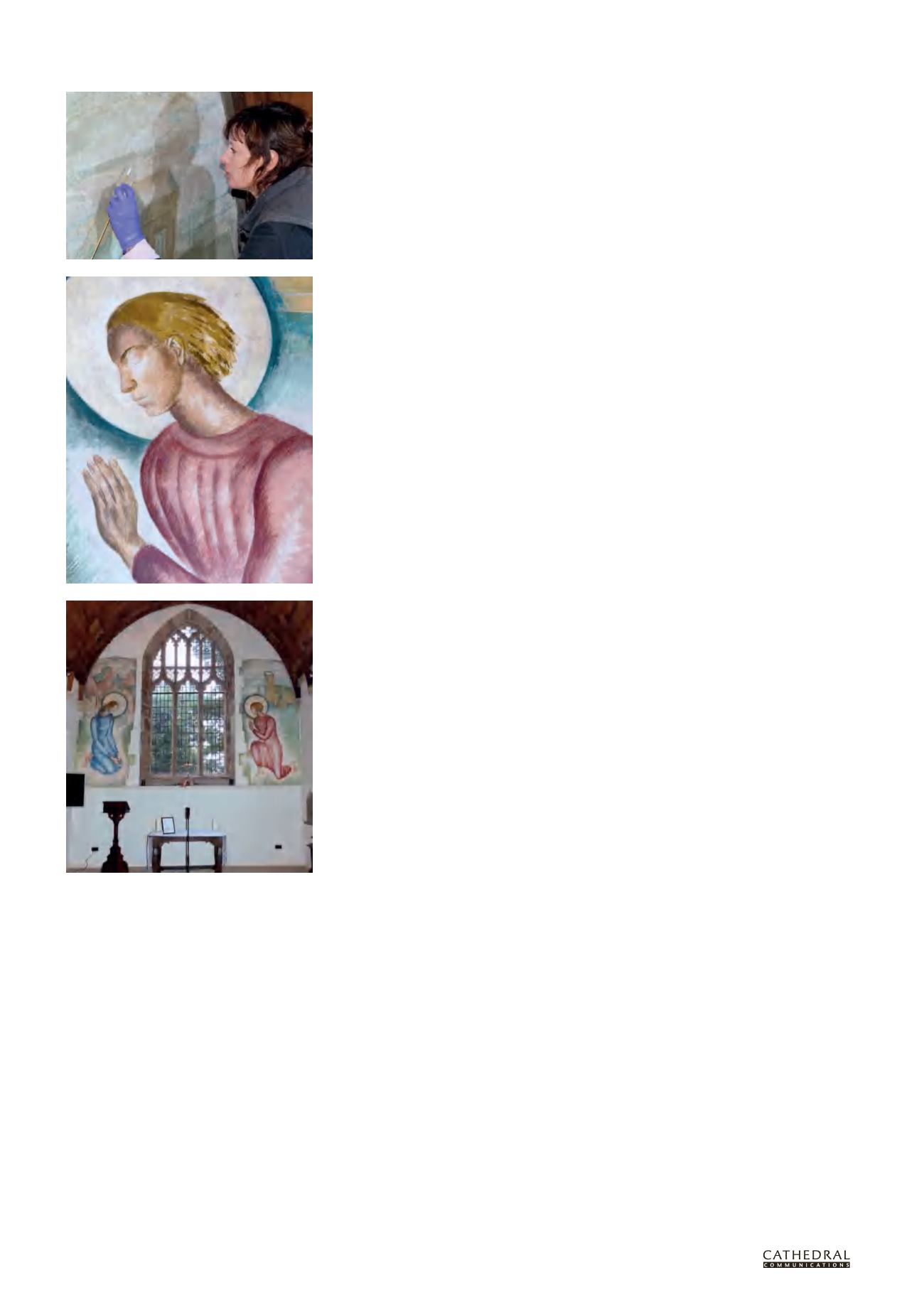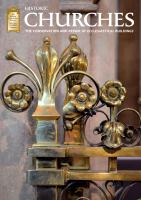

40
BCD SPECIAL REPORT ON
HISTORIC CHURCHES
22
ND ANNUAL EDITION
by £40 million in the 2015 budget. This
enabled the amount allocated for the
initial round to be doubled to £30 million,
with £25 million set aside for allocation
in 2016.
The second round is expected to
open in autumn 2015. It will be open to
both new applicants and to previously
unsuccessful applicants, who will be
required to resubmit. Unsuccessful
applicants will be able to request feedback
to help them decide whether to reapply
and how to improve their application.
The NHMF is also undertaking a rigorous
review, incorporating feedback received,
to inform a revised application form and
improved guidance. Recently appointed
regional officers will be attending events
over the coming months and aiming
to provide more dedicated support for
the second round. Concerns over the
short application period for the initial
scheme have been noted; fortunately, the
Treasury has given a broader timeframe
for allocating the second round, so the
intention is for the application period to
be extended.
Eligibility requirements will remain
unchanged. The building must be
statutorily listed and used for public
worship at least six times a year, but
may be of any faith or denomination. An
up-to-date condition survey (such as a
quinquennial inspection report) must
identify repairs to the roof or rainwater
disposal system as urgent within five
years. Churches that have a live fabric
repair grant from a statutory or lottery
source (such as HLF) are not eligible, but
those that have funding from charities
such as the National Churches Trust or a
local group may apply. Churches that have
received statutory funding for works that
are now complete may be eligible but will
be lower priority.
Grants of £10,000–100,000 will be
available and may cover the full cost of
the necessary repairs, excluding VAT
(which should be recovered via LPOW
grants). Applicants can contribute their
own funds, either if their total project
cost exceeds £100,000 or if they wish to
minimise their grant request. Although
urgency is the principal requirement,
applications must be shown to be
viable so it will be necessary to enlist
an architect or surveyor to prepare an
outline specification and cost estimate.
Applicants must be realistic in presenting
their costs, including contingency, so that
the assessor is assured that the project
can be delivered within the scope of the
grant amount. Successful applicants will
need to be able to undertake their work
within a two-year period from receiving
permission to start, so a programme of
works and cashflow are also necessary; the
revised guidance will provide examples.
Further information will be available
on the LPOW Roof Repair Fund website:
www.lpowroof.org.uk.THE LISTED PLACES OF
WORSHIP GRANT SCHEME
VAT at the standard rate applies to many
works to buildings, with some items rated
at zero or 5 per cent for disabled access
and energy-saving products.
The Listed Places of Worship Grant
Scheme
(www.lpwscheme.org.uk)allows
the cost of VAT incurred on works to
listed places of worship to be reclaimed.
Initially this was to give a level playing field
when restoration attracted VAT and new
build did not. When, in 2012, changes in
the VAT rules resulted in nearly all works
incurring VAT, the scheme was generously
extended to include nearly all works to the
building and fixed furnishings. The two
basic criteria for the payment of a grant
for eligible works are that the building
must be listed and a VAT invoice must
be presented to support the claim. VAT
on relevant professional fees can also be
reclaimed. Although there is a minimum
claim, invoices can be batched to make
this value, enabling pretty much all eligible
expenditure to benefit from the scheme.
UK places of worship claimed
£18 million in 2014. This suggests that
not all the VAT incurred on eligible
works is being reclaimed. It is always
worth checking if work is eligible for the
scheme – the FAQs on the LPW Scheme
website set this out clearly and there is a
telephone helpline.
PARISH CHURCHES OF THE
CHURCH OF ENGLAND
Generous local giving continues to show
the commitment of many people to the
church, but significant support in grant
aid is necessary to help the Church of
England manage its 16,000 buildings, over
12,000 of which are listed, with around
8,000 listed Grade I or II*.
ChurchCare, which is run by
the Cathedral and Church Buildings
Division of the Church of England
(CCB), provides a range of grants for
parish churches. Generally, this is in
partnership with grant-giving bodies
which support the investigation and
conservation of the historic contents,
sculpture and furnishings in Church of
England churches. Some of the funding
programmes are supported by The
Wolfson Foundation, The Pilgrim Trust,
The Radcliffe Trust, the Worshipful
Company of Goldsmiths, and the
Gunnis Fund. ChurchCare has over
£0.5 million in funds to award every year
and receives a huge number of enquiries
and applications. With the help of other
charitable bodies, foundations and trusts,
ChurchCare awarded over £1.1 million
in 2013 through 199 grants to projects in
cathedrals and churches.
ChurchCare provides funding for
the conservation of bells, books and
manuscripts, clocks, church plate,
churchyard structures, fabric repairs,
metalwork, monuments, organs, paintings
and wall paintings, stained glass, textiles,
and timberwork. Applications are
20th-century wall paintings at St Martin’s,
Bilborough, Nottinghamshire by war artist Evelyn
Gibbs, which were restored with the help of the HLF
and ChurchCare (Photos: Tobit Curteis Associates)
















